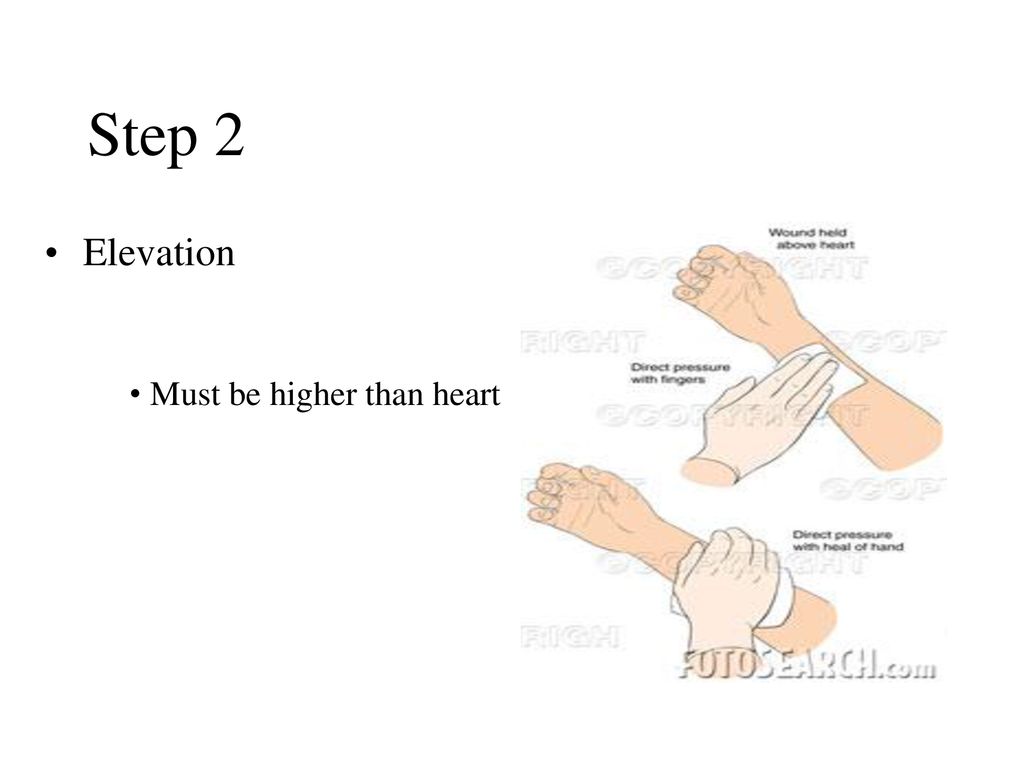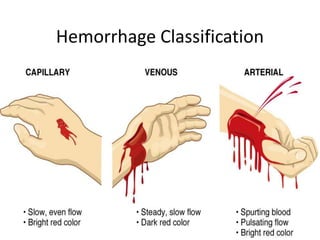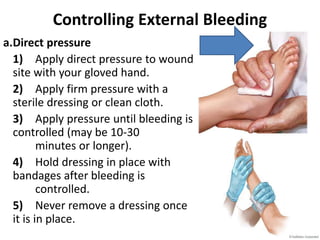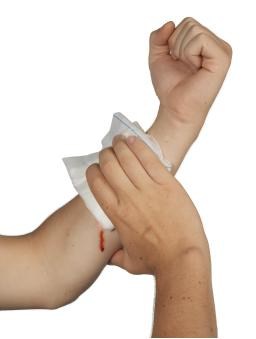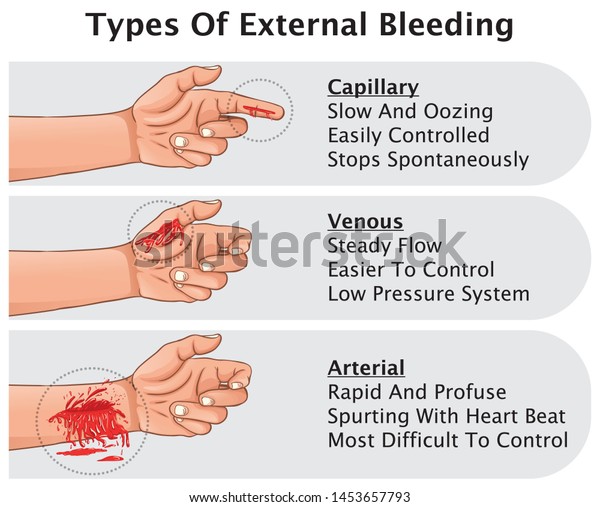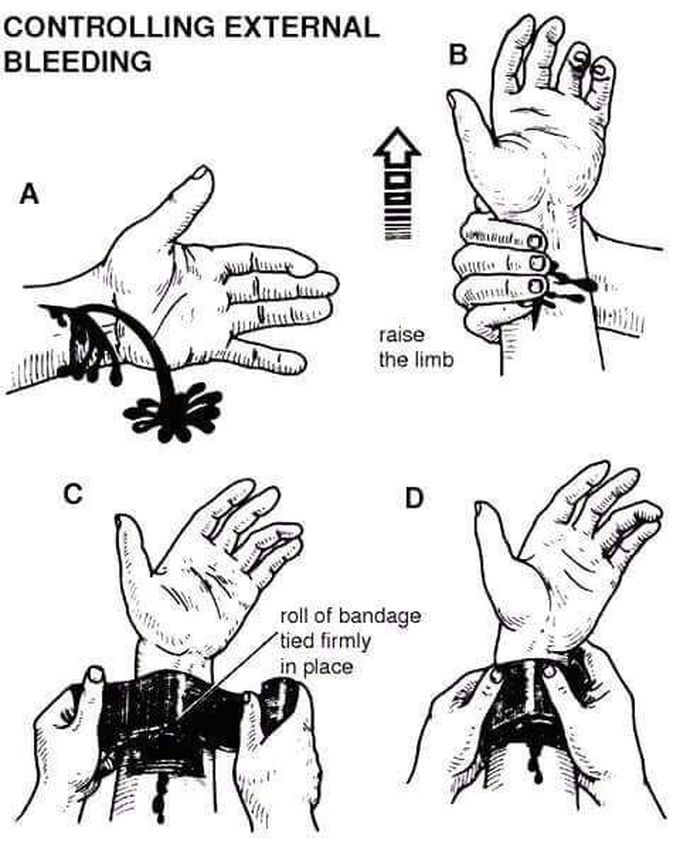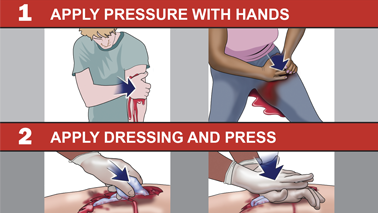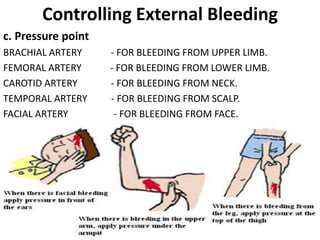Peerless Info About How To Control External Bleeding
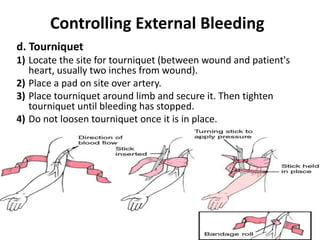
Don't probe the wound or.
How to control external bleeding. Applying firm, direct pressure sufficient to stop the bleeding. The acs provides the below first aid recommendations for treating bleeding from an injury: Where the bleeding point is identified, the rescuer, a bystander or the injured person should control bleeding by:
About press copyright contact us creators advertise developers terms privacy policy & safety how youtube works. A minor or shallow wound with capillary. Don't remove large or deeply embedded objects.
Find the source(s) of bleeding. Do not remove the foreign object, but apply padding on either side. Steps to control bleeding step 1:
These products are usually applied several times per day. Remove the person’s clothing to find the. Use a bleeding plain gauze, control gauze, or a clean cloth to stuff the wound, and then apply pressure with both hands.
2) apply firm pressure with a sterile dressing or clean cloth. If you have something to put in between the blood and your hands, use it. Controlling external bleeding a.direct pressure 1) apply direct pressure to wound site with your gloved hand.
Place a sterile bandage or. How to properly handle an external bleeding situation. Use a tea towel or similar bulky fabric and apply maximum pressure to the area.
Apply direct pressure to the bleeding wound. Emergency bleeding control describes actions that control bleeding from a patient who has suffered a traumatic injury or who has a medical condition that has caused bleeding. First aid actions to manage external bleeding include applying direct pressure to the wound, maintaining the pressure using pads and bandages, and, raising the injured limb.
Care for serious external bleeding usually involves a quick response to control active bleeding while protecting the wound from further damage. You can also apply a topical cream to external hemorrhoids or use a medicated suppository for internal hemorrhoids. If bleeding can not be controlled by pressure, a tourniquet.
The four methods to stop or slow external bleeding.



